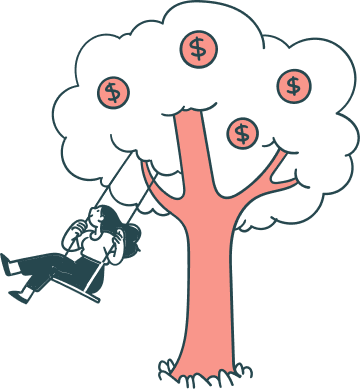Your donor database might boast large numbers, but what good is that number if your donors aren’t actively engaging with your organization? One-time givers and lapsed donors who leave your messages unopened add little value to your base of support. On the other hand, engaged donors will be much more likely to donate regularly and bring in new supporters to further your cause. That’s why building an environment where donors feel connected to your organization is of the utmost importance to ensure the longevity of your organization.
However, ensuring that donors are engaged members of your nonprofit’s community and not just names on a list can take a lot of work. You might not know how engaged your donors are or what first steps to take. Regardless of where you are in the process, we’ll get you started by explaining how to measure donor engagement and how to use that to build strategies for increasing engagement. Here’s what we’re going to cover:
Are you ready to strengthen relationships with donors and increase engagement? Let’s dive in with a brief overview.

What Is Donor Engagement?
Donor engagement is measured using all of the things that make up a complete donor profile, beyond just gift size and superficial demographic information. And it can be one of the most powerful data metrics in a fundraiser’s toolkit.
Donor engagement is important because it drives the long-term success of your organization and your fundraising efforts more than the number of donations you get. Organizations with highly engaged donors will be more likely to retain donors and to receive larger donations. Retaining your donors is important because recurring donors give 42% more per year than one-time donors, according to these statistics from 360MatchPro.
Here are a few more ways that high donor engagement can be beneficial:
- Securing donations from returning donors is less expensive than soliciting donations from first-time donors.
- Donor engagement builds strong donor relationships.
- Active donor engagement can set the foundation for attracting major donors.
Of course, while you might understand the importance of donor engagement, actually engaging donors is easier said than done. Before you start implementing new strategies, it’s important to get a grasp of exactly how engaged your donors are and how you’ll measure the success of your new campaigns.
Take a Personalized Tour
Schedule a demo with one of our fundraising consultants. We’ll show you how the Snowball platform has benefited other nonprofit organizations, and how it can help you.


Measuring Donor Engagement
If you aren’t currently gathering data on your donors’ behaviors and interactions with your organization, it will be difficult to know their level of engagement. Especially for smaller organizations, qualitative information from personal experiences can be valuable, but metrics will better enable you to compare between different initiatives over time.
Here are some key performance indicators (KPI’s) that you can track:
- Recency/pattern/duration of giving. Paying attention to how and when your donors are giving can clue you into what factors may be encouraging or discouraging your donors. If giving went up after your last email, analyze what language you used that might have been effective, and emulate it in future communications. Additionally, identifying recent first-time donors will allow you to send targeted communications to turn them into long-term supporters. Understanding what activities drive donor engagement can help better inform your future initiatives and marketing plans.
- Social media followers on your organization’s accounts. When it comes to social media analytics, number of followers is not the most important metric to focus on, but it can still indicate whether your community is increasing, decreasing, or stagnating. If your following is decreasing or never growing, that’s important to know. However, a smaller number of engaged followers is more important than a constantly growing group of followers who have no meaningful interactions with your content.
- Social media engagement on your organization’s accounts. There are several different ways to measure engagement and the specific metrics differ by platform. Some common analytics to look at would be comments, shares, likes, time spent watching video content, link clicks, and saves on platforms that have that feature. However, remember that metrics such as likes are decreasing in importance because they do not help spread your content as shares do. They also do not indicate that the content is useful or informative as much as interactions like saves, comments, and clicks.
- Number of emails sent versus donations received. If you’re consistently communicating with your donors and asking for donations but rarely receiving them, that’s a clear indication that you need to perform an audit of your emails. The language you’re currently using, the frequency of your emails, or even the segments of your donor base that you’re sending emails to may not be optimal. Changing up your strategy, one factor at a time, and monitoring the results can help you determine how to create more effective communications going forward.
- Recent upgrade or downgrade. If you offer membership tiers, it’s important to monitor more than just the number of members you have. Even when a donor has not fully canceled, downgrading their membership is a signal to your organization. Re-engaging donors who are downgrading before they fully cancel can save your organization a lot of time and effort in the future while also strengthening your relationship with a donor.
- Events attended. There are several different metrics related to events that you should consider tracking. Knowing how many supporters are attending your events can help you determine what kind of events are most popular or what kind of marketing tactics work best. It can also be helpful to track which supporters frequently attend events and which supporters are one-time or very infrequent attendees. This will give you the necessary information to form an engagement or marketing plan specifically for low-attendance supporters as well as recognize and build your relationship with frequent attendees.
- Hours volunteered. This is a great metric not just for seeing how much volunteering your supporters are doing but also for helping you strengthen relationships with supporters. If you’re aware of your current numbers, you can create new organization-wide goals to encourage volunteerism, recognize high-level volunteers, and even set benchmark goals with awards for individual volunteers. For example, if your current individual average is 30 hours a year, you can create a special recognition wall for anyone who goes above that or give out free merchandise for exceeding that goal. This helps motivate individuals, build community, and encourage volunteerism at your organization as a whole.
- Survey responses. When you send out a survey, the purpose is to receive valuable insight to help improve your programs and services. Whether the survey is about a recent event, volunteer experience, or any other aspect of your work, it’s only helpful if you actually get responses. Tracking your survey response rate will allow you to optimize your email, or the survey itself, to encourage participation. Additionally, creating a centralized and automatic way to track the actual responses reduces some of the hassle associated with analyzing survey responses. An automated system will also make it easier to analyze the results in a comprehensive manner and implement changes.
- Website visits. If you haven’t already set up Google Analytics for your website, you should make it a priority to integrate their program. Understanding how many people land on your site is crucial information, and so is how they got there, how long they stay, what they do while on your site, and where they exit. For example, tracking website visits will show you which pages need to be worked on to reduce the number of visitors leaving. This will allow you to make your website as engaging as possible and encourage visitors to perform certain actions, such as donating.
- Email interactions. You send email after email but you have no idea if anyone is reading them. Or maybe you occasionally glance at the metrics in your CRM, but you don’t actively track these metrics and compare them. If this sounds like you, it might be time to take email analytics more seriously. Email is still a popular form of communication between organizations and individuals. If you’re spending the time writing and sending emails, you want to know how many people are opening them, if they click on any links you included, and any other actions they take. Once you are paying attention to these metrics, you can start picking up on things that are working particularly well or particularly poorly.
There are tons of metrics that can give you insight into various parts of your organization and marketing initiatives. Make sure to choose the ones that will be most valuable for your organization. While you can track metrics for a lot of different aspects of your work, it’s important to understand the value of the insights those metrics deliver and have the capacity to act on them.
Additionally, take the time to create a thorough system, ideally automated through your CRM or other software, that will capture and organize this data. This will ensure that you can more easily ascertain the information you need, without getting bogged down in the numbers.

8 Donor Engagement Strategies
With your updated metrics that are more effectively showing you what is and isn’t working, you can start developing new strategies for engaging donors. You might already be doing some of these, and that’s great! If that’s the case, you can still use your metrics to make adjustments to these strategies and leverage them for maximum efficacy. The purpose of tracking metrics is to continually drive improvement.
Use your metrics to execute these eight strategies for improving donor engagement:
1
Tell impact stories. One of the best ways to give people a reason to donate is to help them understand exactly what kind of impact their donation can make. Collecting stories from specific people you have helped in the past, or having numbers on what a donation of X dollars can provide for someone in need, helps donors see the true impact of their donations. It also instills confidence that their donation is actually going to help people — a lack of transparency can make people hesitant to donate their hard-earned money. Compare the success of your story-based communications versus your standard campaigns to see what works best for your donors.
2
Always show donor appreciation. Even when we are doing something out of the kindness of our hearts, it still makes us feel good to hear “thank you.” There are lots of different ways to show appreciation for your supporters’ contributions, from personal, hand-written thank you notes to a dedicated major donor recognition wall. You can get creative with your donor appreciation strategies and use them as an opportunity to personalize communications and build stronger relationships with your donors.
3
Nurture first-time donors. A first-time donation is a wonderful opportunity to build a long-lasting relationship. These donors have already expressed an initial interest in your organization by taking that first step and donating. However, the majority of donors only give once. This is why it’s important to capitalize on this opportunity and dedicate some time to communicating with this new donor and fostering their connection to your organization. A personal message from a team member or even an automated series of emails specifically curated for new donors can help drive home the impact their recurring donation can make and emphasize how much your organization appreciates their support.
4
Use donor segmentation. If you have donors who rarely volunteer but are recurring donors, you probably don’t want to fill their inbox with calls for volunteers. They are likely more interested in your current fundraising efforts. Collecting data about your donors will help you understand their interests and preferences so that you can tailor communications to specific segments of your audience. Receiving too many emails that are not relevant to them can cause your supporters to lose interest. You don’t want to risk supporters unsubscribing or no longer opening your emails. Use donor segmentation to target communications to the right members of your audience for maximum engagement and interest.
5
Personalize your donor communications. Even if you’re segmenting your donors and tailoring the content of your communications for that audience, you may still be missing out on some personalization opportunities. Using the email marketing capabilities of your CRM, you can create emails that will auto-populate with a supporter’s name to make your message more personal. It can also be nice to include a signature (even a digital one) and the name of an actual person at your organization at the end of a message. Any way that you can make a supporter feel that their individual contribution is being appreciated will go a long way in building donor affinity.
6
Connect with donors on social media. Social media is for so much more than just posting updates. When used correctly, it can be a fantastic tool for building community and awareness. Use features like stories to ask questions and engage with your audience. Make sure to actually respond to DMs and write social media captions that encourage responses and further engagement. Stop thinking of your social media account as a message board and start thinking of them as a two-way street for building relationships with supporters.
7
Use text message fundraising. Your supporters likely always have their phone in hand — so why not reach them there? Text message fundraising can be an easy and engaging way to solicit donations, especially from younger people. With dedicated text-to-give tools like Snowball’s, you can easily create a text-to-give fundraiser that allows supporters to donate instantly with just a click. Using a tool with lots of customization will also help you run a more engaging fundraising campaign and leave less room for errors like typos when donors text in their donations.
8
Encourage peer-to-peer fundraising. These types of campaigns can be incredibly powerful as supporters help raise money for your organization through their own personal networks. With the peer-to-peer fundraising tool that Snowball is soon, you’ll be able to create fundraising campaign pages for individuals or teams to raise on your behalf as well as leaderboards to encourage a little healthy competition. Their peer-to-peer tool will also allow you to run text-to-give campaigns with unlimited trigger words for all of your P2P campaign pages.
Of course, when trying a new strategy or improving one you’re already executing, you’ll want to develop a way to measure the impact of the changes you’re implementing. If you’re spending the time to think intentionally about how you’re engaging donors, what your KPIs are telling you, and how you can improve, you’ll be well on your way to higher donor engagement.
The issue of donor engagement is a constantly evolving topic, with nonprofits always struggling to find new ways to make meaningful connections between their organization and their supporters. Whether your organization is a longstanding titan in the nonprofit world or a newer team just beginning to break out, these data and software solutions will help you to keep up with the times and engage your donors where they live, work, and play.
As you start implementing these strategies and tracking metrics, you can explore these additional resources to level up your fundraising work.
Take a Personalized Tour
Schedule a demo with one of our fundraising consultants. We’ll show you how the Snowball platform has benefited other nonprofit organizations, and how it can help you.




